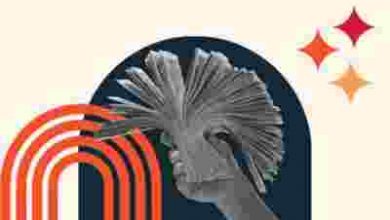Designing for Emotional Impact: Eliciting an Emotional Response

Designing for Emotional Impact: Eliciting an Emotional Response
The Power of Emotional Design
Have you ever come across a website or a piece of artwork that made you feel something deep inside? That’s the magic of emotional design. Designing with the intention of evoking emotions from users can create a memorable and impactful experience. Whether you’re a web designer, graphic artist, or marketer, understanding the importance of emotional design can take your work to the next level.
Understanding Emotional Design
Emotional design refers to the practice of intentionally creating designs that elicit emotional responses from users. It involves using visual elements, color psychology, typography, imagery, and storytelling to evoke specific feelings.
When done right, emotional design can:
1. Capture and hold users’ attention: Designs that evoke strong emotions are more likely to capture the users’ attention and keep them engaged.
2. Create memorable experiences: Emotions are closely linked to memories. By design, you can create experiences that leave a lasting impact on users.
3. Drive user actions: Emotions can be powerful motivators. By triggering specific emotions, you can encourage users to take desired actions, such as making a purchase or signing up for a newsletter.
Elements of Emotional Design
To design for emotional impact, consider the following elements:
1. Color psychology: Colors have the ability to evoke specific emotions. For example, warm tones like red and orange can create feelings of excitement or passion, while cool tones like blue and green can elicit a sense of calmness or trust.
2. Typography: Different fonts can convey different emotions. Playful and rounded fonts may evoke a sense of whimsy, while bold and modern fonts may create a feeling of power or strength.
3. Imagery: Images and illustrations can evoke emotions by representing concepts or scenarios that users can relate to. Select visuals that resonate with your target audience and align with the desired emotional response.
4. Storytelling: Narratives have a way of connecting with users on an emotional level. Use storytelling techniques to create a compelling narrative that engages users and elicits the desired emotional response.
Frequently Asked Questions (FAQs)
What types of emotions can be elicited through design?
Design can evoke a wide range of emotions, including joy, anger, sadness, fear, surprise, and even nostalgia. The choice of colors, typography, imagery, and storytelling techniques can help evoke specific emotions according to the desired outcome.
How can emotional design be applied to web design?
Web designers can leverage emotional design by using colors, typography, imagery, and storytelling to create a cohesive and emotionally resonant experience. From the color scheme to the layout and visual elements, every aspect of the website should be carefully crafted to elicit the desired emotional response from visitors.
How do you measure the success of emotional design?
Measuring the success of emotional design can be challenging since emotions are subjective. However, you can track user engagement metrics such as time spent on page, click-through rates, conversion rates, or even conduct user surveys to gather feedback on the emotional impact of your design.
Conclusion
Designing for emotional impact goes beyond aesthetics; it connects with users on a deeper level, leaving a lasting impression. By leveraging elements such as color psychology, typography, imagery, and storytelling, you can create designs that resonate with your target audience and evoke the desired emotional response.
Remember, emotional design can greatly enhance the user experience and drive user actions. So, next time you’re working on a design project, don’t forget to consider the emotional impact you want to create.



